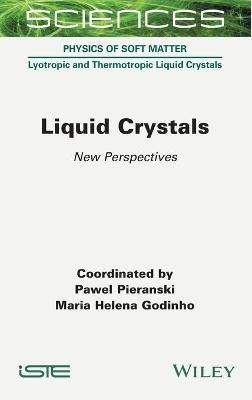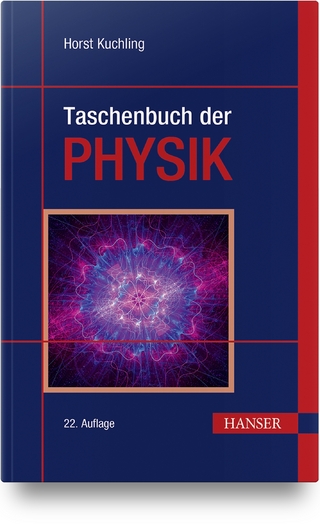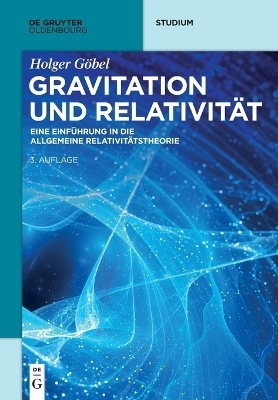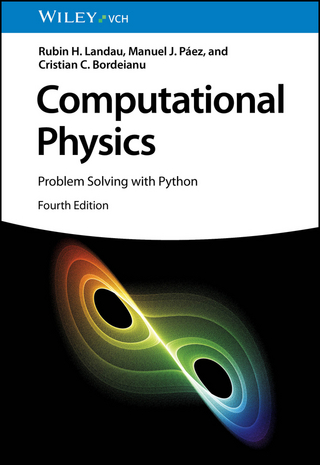
Liquid Crystals
Iste Ltd (Verlag)
978-1-78945-040-8 (ISBN)
First, it explores the interaction of light with mesophases, when the light or matter is endowed with topological defects. It goes on to show how electrophoresis, electro-osmosis and the swimming of flagellated bacteria are affected by the anisotropic properties of liquid crystals.
It also reports on the recent progress in the understanding of thermomechanical and thermohydrodynamical effects in cholesterics and deformed nematics and refutes the common belief that these effects could explain Lehmann’s observations of the rotation of cholesteric droplets subjected to a temperature gradient. It then studies the physics of the dowser texture, which has remarkable properties. This is of particular interest in regards to nematic monopoles, which can easily be generated, set into motion and collided within it.
Finally, this book deals with the spontaneous emergence of chirality in nematics made of achiral molecules, and provides a brief historical context of chirality
Pawel Pieranski works at Laboratoire de Physique des Solides in Orsay, France. He has published a two-volume textbook on liquid crystals, written in collaboration with Patrick Oswald, and has conducted extensive research in many different areas of the field of liquid crystals. Maria Helena Godinho is Associate Professor at NOVA University Lisbon, Portugal. Between 2016 and 2020 she was Vice President of the International Liquid Crystal Society. In 2019 she was awarded the “Fréedericksz Medal” by the Russian Liquid Crystal Society.
Preface xi
Chapter 1. Singular Optics of Liquid Crystal Defects 1
Etienne BRASSELET
1.1. Prelude from carrots 1
1.2. Liquid crystals, optics and defects: a long-standing trilogy 1
1.3. Polarization optics of liquid crystals: basic ingredients 3
1.3.1. The few liquid crystal phases at play in this chapter 3
1.3.2. Liquid crystals anisotropy and its main optical consequence 3
1.3.3. Polarization state representation in the paraxial regime 5
1.3.4. Polarization state evolution through uniform director fields 6
1.3.5. Effective birefringence 8
1.3.6. Polarization state evolution through twisted director fields 9
1.4. Liquid crystal reorientation under external fields 15
1.5. Customary optics from liquid crystal defects 16
1.5.1. Localized defects structures in frustrated cholesteric films 17
1.5.2. Elongated defects structures in frustrated cholesteric films 20
1.5.3. Regular optics from other topological structures 24
1.5.4. Assembling photonic building blocks with liquid crystal defects 31
1.6. From regular to singular optics 34
1.6.1. What is singular optics? 34
1.6.2. A nod to liquid crystal defects 37
1.6.3. Singular paraxial light beams 38
1.6.4. Generic singular beam shaping strategies 41
1.7. Advent of self-engineered singular optical elements enabled by liquid crystals defects 44
1.7.1. Optical vortices from a cholesteric slab: dynamic phase option 44
1.7.2. Optical vortices from a nematic droplet: geometric phase option 45
1.8. Singular optical functions based on defects: a decade of advances 47
1.8.1. Custom-made singular dynamic phase diffractive optics 47
1.8.2. Spontaneous singular geometric phase optics 47
1.8.3. Directed self-engineered geometric phase optics 52
1.8.4. From single to arrays of optical vortices 58
1.9. Emerging optical functionalities enabled by liquid crystal defects 58
1.9.1. Spectrally and spatially adaptive optical vortex coronagraphy 59
1.9.2. Multispectral management of optical orbital angular momentum 67
1.10. Conclusion 69
1.11. References 70
Chapter 2. Control of Micro-Particles with Liquid Crystals 81
Chenhui PENG and Oleg D. LAVRENTOVICH
2.1. Introduction 81
2.2. Control of micro-particles by liquid crystal-enabled electrokinetics 82
2.2.1. Liquid-crystal enabled electrophoresis 85
2.2.2. Liquid crystal-enabled electro-osmosis 91
2.3. Controlled dynamics of microswimmers in nematic liquid crystals 96
2.4. Conclusion 104
2.5. Acknowledgments 107
2.6. References 107
Chapter 3. Thermomechanical Effects in Liquid Crystals 117
Patrick OSWALD, Alain DEQUIDT and Guilhem POY
3.1. Introduction 117
3.2. The Ericksen–Leslie equations 121
3.2.1. Conservation equations 121
3.2.2. Molecular field 123
3.2.3. Constitutive equations 125
3.3. Molecular dynamics simulations of the thermomechanical effect 130
3.3.1. Molecular models 130
3.3.2. Constrained ensembles 131
3.3.3. Computation of the transport coefficients 133
3.3.4. Analysis of the results 134
3.4. Experimental evidence of the thermomechanical effect 135
3.4.1. The static Éber and Jánossy experiment 136
3.4.2. Another static experiment proposed in the literature 140
3.4.3. Continuous rotation of translationally invariant configurations 142
3.4.4. Drift of cholesteric fingers under homeotropic anchoring 165
3.5. The thermohydrodynamical effect 174
3.5.1. A proposal for measuring the TH Leslie coefficient μ: theoretical prediction 175
3.5.2. About the measurement of the TH Akopyan and Zel’dovich coefficients 178
3.6. Conclusions and perspectives 184
3.7. References 185
Chapter 4. Physics of the Dowser Texture 193
Pawel PIERANSKI and Maria Helena GODINHO
4.1. Introduction 193
4.1.1. Disclinations and monopoles 193
4.1.2. Road to the dowser texture 197
4.1.3. The dowser texture 201
4.2. Generation of the dowser texture 207
4.2.1. Setups called “Dowsons Colliders” 207
4.2.2. “Classical” generation of the dowser texture 208
4.2.3. Accelerated generation of the dowser texture using the DDC2 setup 208
4.3. Flow-assisted homeotropic ⇒ dowser transition 210
4.3.1. Experiment using the DDC2 setup 210
4.3.2. Flow-assisted bowser-dowser transformation in capillaries 212
4.3.3. Flow-assisted homeotropic-dowser transition in the CDC2 setup 213
4.3.4. Theory of the flow-assisted homeotropic-dowser transition 214
4.3.5. Summary and discussion of experimental results 216
4.4. Rheotropism 217
4.4.1. The first evidence of the rheotropism 217
4.4.2. Synchronous winding of the dowser field 219
4.4.3. Asynchronous winding of the dowser field 225
4.4.4. Hybrid winding of the dowser field with CDC2 228
4.4.5. Rheotropic behavior of π- and 2π-walls 228
4.4.6. Action of an alternating Poiseuille flow on wound up dowser fields 231
4.5. Cuneitropism, solitary 2π-walls 233
4.5.1. Generation of π-walls by a magnetic field 233
4.5.2. Generation and relaxation of circular 2π-walls 236
4.5.3. Cuneitropic origin of the circular 2π-wall 236
4.6. Electrotropism 239
4.6.1. Definition of the electrotropism 239
4.6.2. Flexo-electric polarization 241
4.6.3. Setup 241
4.6.4. The first evidence of the flexo-electric polarization 242
4.6.5. Measurements of the flexo-electric polarization 243
4.7. Electro-osmosis 246
4.7.1. One-gap system of electrodes 246
4.7.2. Two-gap system of electrodes 250
4.7.3. Convection of the dowser field 252
4.8. Dowser texture as a natural universe of nematic monopoles 253
4.8.1. Structures and topological charges of nematic monopoles 253
4.8.2. Pair of dowsons d+ and d- seen as a pair of monopoles 255
4.8.3. Generation of monopole–antimonopole pairs by breaking 2π-walls 257
4.9. Motions of dowsons in a wound up dowser field 262
4.9.1. Single dowson in a wound up dowser field 262
4.9.2. The Lorentz-like force 263
4.9.3. Velocity of dowsons in wound up dowser fields 266
4.9.4. The race of dowsons 266
4.9.5. Trajectories of dowsons observed in natural light 270
4.9.6. Trajectories of dowsons observed in polarized light 272
4.10. Collisions of dowsons 279
4.10.1. Pair of dowsons (d+,d-) inserted in a wound up dowser field 280
4.10.2. Cross-section for annihilation of dowsons’ pairs 282
4.10.3. Rheotropic control of the collisions outcome 283
4.11. Motions of dowsons in homogeneous fields 285
4.12. Stabilization of dowsons systems by inhomogeneous fields with defects 287
4.12.1. Gedanken experiment 287
4.12.2. Triplet of dowsons stabilized in MBBA by a quadrupolar electric field 289
4.12.3. Septet of dowsons in MBBA stabilized by a quadrupolar electric field` 290
4.12.4. Dowsons d+ stabilized by corner singularities of the electric field 290
4.13. Dowser field submitted to boundary conditions with more complex geometries and topologies 291
4.13.1. Ground state of the dowser field in an annular droplet 291
4.13.2. Wound up metastable states of the dowser field in the annular droplet 293
4.13.3. Dowser field in a square network of channels, four-arm junctions 293
4.13.4. Triangular network, six-arm junctions 294
4.13.5. Three-arm junctions 296
4.13.6. General discussion of n-arm junctions 296
4.14. Flow-induced bowson-dowson transformation 298
4.15. Instability of the dowson’s d- position in the stagnation point 301
4.16. Appendix 1: equation of motion of the dowser field 303
4.16.1. Elastic torque 303
4.16.2. Viscous torques 304
4.16.3. Magnetic torque 306
4.16.4. Electric torque 306
4.17. References 306
Chapter 5. Spontaneous Emergence of Chirality 311
Mohan SRINIVASARAO
5.1. Introduction 311
5.2. Chirality: a historical tour 312
5.2.1. Chirality and optics 316
5.2.2. Chiral symmetry breaking and its misuse 322
5.2.3. Spontaneous emergence of chirality or chiral structures in liquid crystals 323
5.2.4. Spontaneous emergence of chirality due to confinement 326
5.2.5. Spontaneous emergence of chirality due to cylindrical confinement 329
5.2.6. Some misconceptions about optical rotation 339
5.3. Concluding remarks 341
5.4. Acknowledgments 342
5.5. References 342
List of Authors 347
Index 349
| Erscheinungsdatum | 28.10.2021 |
|---|---|
| Verlagsort | London |
| Sprache | englisch |
| Maße | 10 x 10 mm |
| Gewicht | 454 g |
| Themenwelt | Naturwissenschaften ► Physik / Astronomie |
| ISBN-10 | 1-78945-040-3 / 1789450403 |
| ISBN-13 | 978-1-78945-040-8 / 9781789450408 |
| Zustand | Neuware |
| Haben Sie eine Frage zum Produkt? |
aus dem Bereich


